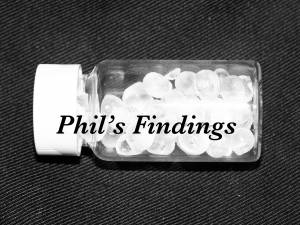Phil’s Findings #17: Perceptual Equivalence
24 October 2011

Our interaction with the world around us is completely governed by our perception of it. Our five senses are being constantly fed with a rich variety of inputs, and what we see, feel, touch, taste and smell creates a huge amount of sensorial data. The brain is literally bombarded with information – constantly and simultaneously - throughout your waking day, and it has a hell of a job to do to unravel and decode all those messages. However, such is the utter sophistication of the brain that, for the vast majority of us, it does it with complete ease. Our perceptual experience isn’t generally one of conflicting and confusing sensorial messages, but one of smooth and integrated sensations where things flit in and out of our consciousness, as and when they are required. This has the affect of creating a flowing perceptual experience where our senses become integrated, working together to form your individual take on the work at any one moment in time.
Although we are all fully adapted to our sensations and perceptions as part of our fundamental functioning as living beings, understanding how all of that sensorial data is interpreted by the brain is really quite mysterious. Great strides have been made within the realm of neuroscience to understand the physicality of such processes, such as the paths of neural messages or which parts of the brain respond to particular sensorial stimuli. However, sensory integration, where different senses work together to form a perception of a single stimulus, is not particularly well understood. Experiments in psychophysics have sought to disentangle this sensory cooperation from the point of view of psychology, rather than neuroscience. These types of studies are based on perceptual equivalence.
Of particular interest here is the way in which sight and touch work together when you come into contact with objects around you. The object information which your brain receives through your senses can be based on both geometric properties, such as shape, size and orientation, and its material properties like temperature, texture and weight. The judgements you make about an object are based both on what you see and what you feel, and this process works in a seamless fashion. The types of tests used involve tasks like feeling an object without looking at it, and then being asked to pick it out of line up of similar objects by sight. Or it might just be an object property – such as roughness – where you do a blind test by touch and then have to pick a similar roughness by sight. If perceptual equivalence exists, it means information gathered by tough can be passed on to your sight, and vice versa. Studies suggest that for simple shapes and surfaces, this perceptual equivalence does exist, but it soon gets into difficulty as complexity increases. Still, the exact mechanisms at play here are fascinating and relatively unknown, and future research within psychophysics and neuroscience will reveal great secrets about our sensory experience of the world.